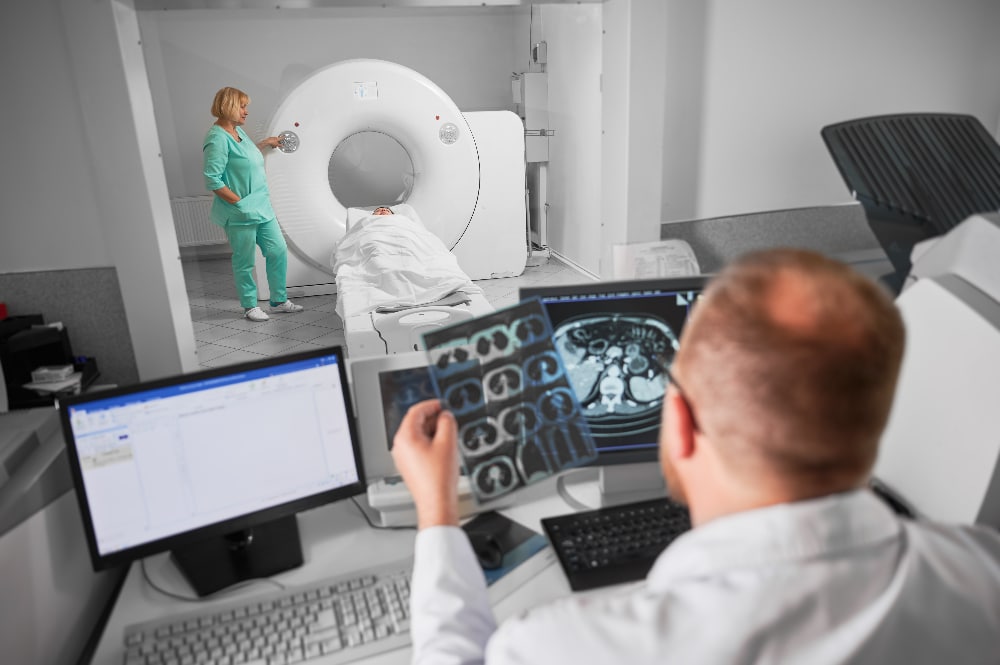When someone struggles with alcohol addiction, the effects extend far beyond the obvious symptoms of intoxication and withdrawal. One of the most serious but often overlooked complications is thiamine (vitamin B1) deficiency, which can lead to a life-threatening neurological condition called Wernicke’s encephalopathy. At Healthy Life Recovery, our comprehensive approach to addiction treatment includes understanding and addressing these medical complications that can affect long-term recovery outcomes.
Understanding Thiamine Deficiency and Alcohol Use Disorder
Thiamine, also known as vitamin B1, plays a crucial role in brain function and energy metabolism. This water-soluble vitamin is essential for converting glucose into energy and maintaining proper nerve, muscle, and heart function, according to the National Institutes of Health. Unlike fat-soluble vitamins, the body cannot store large amounts of thiamine, requiring regular dietary intake to maintain adequate levels.
How Alcohol Depletes Thiamine
Chronic alcohol consumption creates a perfect storm for thiamine deficiency through multiple interconnected mechanisms. Alcohol damages the intestinal lining, significantly impairing the body’s ability to absorb thiamine from food sources. Many individuals with alcohol use disorder compound this problem through inadequate dietary intake, consuming the majority of their calories from alcohol rather than nutrient-rich foods that provide essential vitamins.
The situation becomes even more complex because alcohol metabolism itself requires thiamine as a cofactor, rapidly depleting the body’s already limited stores. Additionally, liver damage from chronic alcohol use reduces the organ’s ability to store thiamine effectively, creating a cycle where the body becomes increasingly unable to maintain adequate vitamin B1 levels.
Studies show that individuals with chronic alcoholism have significantly lower thiamine levels than the general population, with the body’s thiamine reserves typically lasting only 3-4 weeks without adequate replenishment. The National Institute on Alcohol Abuse and Alcoholism (NIAAA) reports that alcohol use disorder affects millions of Americans and creates serious nutritional deficiencies.
What Is Wernicke’s Encephalopathy?
Wernicke’s encephalopathy is a severe neurological syndrome caused by acute thiamine deficiency. This medical emergency affects approximately 0.4-2.8% of the general population but is significantly more common in individuals with alcohol use disorders, as documented in medical literature published by the National Center for Biotechnology Information.
The Classic Triad of Symptoms
Historically, Wernicke’s encephalopathy has been characterized by three main symptoms: mental status changes including confusion, disorientation, memory problems, or altered consciousness; ocular abnormalities, such as eye movement problems, nystagmus (involuntary eye movements), double vision, or paralysis of eye muscles; and ataxia, which manifests as loss of coordination, unsteady gait, or balance problems.
However, research shows that only about one-third of patients present with all three symptoms, making diagnosis challenging and often leading to missed or delayed recognition of this potentially fatal condition. The Mayo Clinic emphasizes the importance of early recognition, as delayed treatment can result in permanent neurological damage.
Why Early Diagnosis Matters
Without prompt treatment, Wernicke’s encephalopathy can progress to permanent brain damage, Korsakoff syndrome (characterized by severe memory impairment), coma, and even death in up to 20% of untreated cases. The key to preventing these devastating outcomes is early recognition and immediate thiamine replacement therapy. Understanding these risks is particularly important for individuals considering the benefits of going to rehab, as professional treatment centers can identify and address these medical complications.
The Role of CT and MRI Scans in Diagnosis
While Wernicke’s encephalopathy is primarily a clinical diagnosis, neuroimaging has revolutionized our ability to identify this condition, especially when symptoms are incomplete or atypical.
CT Scan Limitations
Computed tomography (CT) scans have limited usefulness in diagnosing acute Wernicke’s encephalopathy. CT may show:
- Areas of reduced density in specific brain regions
- Generally normal appearance in early stages
- Subtle changes that are easy to miss
Most cases of acute Wernicke’s encephalopathy appear normal on CT scans, making this imaging modality insufficient for reliable diagnosis.
MRI: The Gold Standard for Diagnosis
Magnetic resonance imaging (MRI) has emerged as the most important and effective diagnostic tool for Wernicke’s encephalopathy, according to research published in the American Journal of Roentgenology. MRI can detect characteristic brain changes even when clinical symptoms are incomplete, making it invaluable for early diagnosis and treatment planning.
Typical MRI Findings
On MRI scans, thiamine deficiency creates distinctive patterns of brain involvement:
On MRI scans, thiamine deficiency creates distinctive patterns of brain involvement. T2-weighted and FLAIR sequences show bilateral, symmetrical hyperintensities (bright signals) in specific brain regions that are particularly vulnerable to thiamine deficiency. These include the thalami (particularly the medial portions), mammillary bodies (small structures involved in memory), the tectal plate and periaqueductal area (around the brain’s central aqueduct), and areas surrounding the third ventricle. These regions are especially susceptible due to their high metabolic demands and sensitivity to energy disruption.
Atypical MRI Findings
In some cases, particularly in non-alcoholic patients, MRI may also reveal involvement of additional brain structures, including the cerebellum (coordination center), cranial nerve nuclei (affecting eye movements and facial sensation), the cerebral cortex (higher brain functions), red nuclei and dentate nuclei, and the corpus callosum (which connects brain hemispheres). These atypical patterns often provide important clues about the severity and extent of thiamine deficiency.
Advanced MRI Techniques
Diffusion-Weighted Imaging (DWI)
DWI with apparent diffusion coefficient (ADC) mapping helps distinguish between:
- Vasogenic edema (reversible swelling due to blood-brain barrier disruption)
- Cytotoxic edema (cellular swelling that may indicate more severe damage)
This information is crucial for predicting treatment response and prognosis.
Contrast-Enhanced MRI
When gadolinium contrast is used, it can identify blood-brain barrier disruption in about 50% of cases. Sometimes, contrast enhancement may be the only visible sign of Wernicke’s encephalopathy, particularly in the mammillary bodies.
Distinguishing Alcoholic from Non-Alcoholic Cases
MRI findings can help differentiate between thiamine deficiency in alcoholic versus non-alcoholic patients:
Alcoholic Patients
- Often show atrophy (shrinkage) of mammillary bodies and cerebellar vermis from previous episodes
- More likely to have contrast enhancement
- May have evidence of chronic brain changes
Non-Alcoholic Patients
- Typically shows acute changes without atrophy
- More likely to have atypical brain involvement patterns
- Often have cortical (surface brain) involvement, which may indicate a poorer prognosis
Treatment and Recovery Implications
Immediate Medical Management
Wernicke’s encephalopathy is a medical emergency requiring immediate thiamine replacement, as outlined by the Substance Abuse and Mental Health Services Administration (SAMHSA). Treatment protocols include high-dose intravenous thiamine at 200-500mg daily initially, with duration continuing until no further clinical improvement occurs. Critical timing requires that thiamine be given before or simultaneously with glucose to prevent worsening of the condition.
Long-Term Recovery Considerations
At Healthy Life Recovery, we understand that addressing thiamine deficiency is just one component of comprehensive addiction treatment. Our medically supervised detox program provides comprehensive care that includes thorough nutritional assessment and supplementation, continuous monitoring for neurological complications, coordinated care with neurologists when specialized intervention is needed, and careful transition planning to our intensive outpatient programs as patients stabilize.
The Importance of Nutrition in Recovery
Our Four Pillars approach emphasizes nutrition as a foundation of lasting recovery through comprehensive nutritional counseling to address deficiencies, personalized meal planning for optimal brain health, extensive education about the connection between nutrition and mental health, and ongoing support for healthy lifestyle changes that support long-term sobriety.
Prevention and Long-Term Management
Early Recognition in Treatment Settings
Healthcare providers and addiction specialists must maintain high suspicion for thiamine deficiency in patients with a history of chronic alcohol use, malnutrition or rapid weight loss, gastrointestinal disorders, recent bariatric surgery, or persistent vomiting. Understanding the signs of alcoholism can help identify individuals at risk for developing serious medical complications like Wernicke’s encephalopathy.
Role of Advanced Neuroimaging
Modern neuroimaging techniques offer several advantages for healthcare providers treating addiction-related complications. The Centers for Disease Control and Prevention (CDC) reports that excessive alcohol use is responsible for approximately 95,000 deaths annually in the United States, with many cases involving preventable medical complications. Advanced imaging provides early detection before irreversible damage occurs, enables monitoring of treatment response through follow-up scans, helps identify patients at risk for Korsakoff syndrome, and guides treatment intensity and duration based on neurological findings.
The Connection to Mental Health Treatment
Thiamine deficiency can significantly complicate dual diagnosis treatment by affecting cognitive function and memory formation, disrupting mood regulation and emotional stability, reducing learning capacity during therapy sessions, and diminishing treatment engagement and motivation.
Our integrated approach addresses both the addiction and depression connection and any neurological complications through cognitive behavioral therapy specifically adapted for cognitive impairments, carefully managed medication management protocols that consider brain health implications, and progressive therapy approaches that adapt as neurological function improves over time.
When to Seek Help
Individuals in recovery or their loved ones should seek immediate medical attention if experiencing sudden confusion or memory problems, vision changes or eye movement difficulties, balance problems or coordination loss, persistent nausea and vomiting, or signs of severe alcohol withdrawal.
These symptoms may indicate the need for emergency medical intervention and potentially medically supervised alcohol detox.
Conclusion: Advanced Diagnostics Save Lives
Alcohol-related thiamine deficiency represents a serious but treatable complication of chronic alcohol use. The advent of advanced neuroimaging, particularly MRI, has transformed our ability to diagnose Wernicke’s encephalopathy early and accurately. This early detection capability can mean the difference between complete recovery and permanent disability.
At Healthy Life Recovery, we combine cutting-edge medical knowledge with compassionate, comprehensive care. Our San Diego team understands that successful addiction treatment requires addressing not just the addiction itself, but also the medical complications that can arise from chronic substance use. This is why choosing the best rehab center involves selecting a facility equipped to handle complex medical needs.
If you or a loved one is struggling with alcohol addiction, don’t wait for serious medical complications to develop. Early intervention provides the best opportunity for full recovery and can prevent life-threatening conditions like Wernicke’s encephalopathy.
Get the Help You Deserve Today
Our experienced medical team at Healthy Life Recovery is equipped to handle complex cases involving both addiction and medical complications. From medically supervised detox through comprehensive addiction treatment, we provide the coordinated care needed for lasting recovery.
Don’t let alcohol addiction steal another day from your life. Contact us today at (844) 252-8347 to begin your journey toward health, sobriety, and renewed vitality. Your brain – and your future – are worth protecting.
References and Additional Resources
For readers seeking additional information about alcohol-related thiamine deficiency and treatment options, the following authoritative sources provide comprehensive medical and scientific information:
Government Health Agencies:
- National Institute on Alcohol Abuse and Alcoholism (NIAAA) – Comprehensive research on alcohol use disorders and related medical complications
- Centers for Disease Control and Prevention – Alcohol and Public Health – Statistics and prevention information about alcohol-related health problems
- National Institutes of Health – Office of Dietary Supplements – Professional fact sheet on thiamine requirements and deficiency
- Substance Abuse and Mental Health Services Administration (SAMHSA) – Treatment resources and guidelines for substance use disorders
Medical and Educational Resources:
- Mayo Clinic – Wernicke-Korsakoff Syndrome – Patient education on symptoms, causes, and treatment
- National Center for Biotechnology Information (NCBI) – Medical literature and research studies
- Cleveland Clinic – Thiamine Deficiency – Clinical information about vitamin B1 deficiency
Professional Medical Journals:
- American Journal of Roentgenology – Neuroimaging research and diagnostic guidelines
- Journal of Neuroimaging – Advanced imaging techniques for brain disorders
- Alcohol and Alcoholism – Peer-reviewed research on alcohol-related medical conditions
This article is for educational purposes only and should not be considered medical advice. Always consult with healthcare professionals for proper diagnosis and treatment of alcohol-related health complications.






